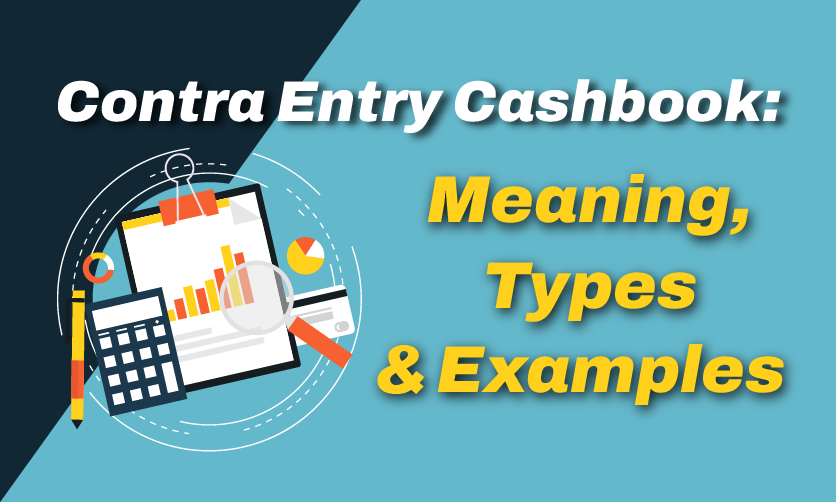
How To Prepare Year-End Adjustments In Accounting: Step-By-Step Tutorial
Do you want to prepare a year-end adjustments in accounting? If yes, then this article can prove to be a better option for you. The application of the year-end adjustments in accounting can make things work perfectly well for you.
Year-end adjustments in accounting can make things work perfectly well in your favour. It can boost the scope of your record-keeping to the next level. The application of the correct strategy can make things work well in your way.
In general, it is a practice that the complete accounting team takes 25 days to complete an annual close. In most cases, this coincides with the complete month-end closing. So, you should be well aware of it.
Table of Contents
What Are Adjusting Entries In Accounting?
Adjusting entries are journal entries made at the end of an accounting period (e.g., monthly, quarterly, or yearly) to update account balances, ensuring financial statements reflect accurate and up-to-date information. They align with the accrual basis of accounting, which records expenses as well as revenue when they are earned or incurred, not when cash changes hands. This ensures compliance with the matching principle, where expenses are matched with related revenues in the same period.
What Are Year-End Adjustments In Accounting?
Year-end adjustments are journal entries recorded at the end of a fiscal year (typically December 31 or March 31 in India) to update account balances, ensuring financial statements (e.g., income statement, balance sheet) comply with the accrual basis and matching principle. They allocate expenses and revenue to the correct period, adjust asset and liability accounts, and prepare accurate reports for stakeholders, tax authorities, and GST compliance, which is relevant to your interest in ICA’s TallyPrime training. Year-end adjustment in accounting forms an essential part of bookkeeping in 2025.

10 Steps To Prepare Year-End Adjustments In Accounting
Year-end adjustments ensure financial statements reflect accurate revenues, expenses, assets, and liabilities for the fiscal year, aligning with the accrual basis of accounting. These steps are practical for BA students learning TallyPrime, as taught in ICA Edu Skills’ hands-on training.
Step 1: Review The Trial Balance
- Action: Obtain the trial balance from TallyPrime to identify account balances needing adjustments.
- Purpose: Ensures all accounts (e.g., revenues, expenses, assets) are reviewed for accuracy before adjustments.
- Example: In TallyPrime, go to Gateway of Tally & Display > Trial Balance to check balances like Accounts Receivable or Prepaid Expenses.

- ICA Relevance: ICA’s training teaches you to generate and analyze trial balances using TallyPrime’s simulation tools.
Step 2: Identify Accrued Revenues
- Action: Record revenues earned but not yet billed or received (e.g., unbilled services).
- Purpose: Recognizes revenue in the correct fiscal year per the matching principle.
- Example: A Rajkot-based firm earns ₹15,000 for services in March 2025 but bills in April. Entry: Debit: Accounts Receivable ₹15,000; Credit: Service Revenue ₹15,000.
- TallyPrime: Create a journal voucher (Gateway of Tally > Vouchers > F7: Journal) to update ledgers, a skill covered in ICA’s GST modules.

Step 3: Record Accrued Expenses
- Action: Identify expenses incurred but not yet paid or recorded (e.g., salaries, utilities).
- Purpose: Matches expenses to the period incurred, ensuring accurate profit reporting.
- Example: ₹10,000 in March 2025 salaries payable in April. Entry: Debit Salaries Expense ₹10,000; Credit Salaries Payable ₹10,000.
- TallyPrime: Use a journal voucher to adjust “Salaries Expense” and “Salaries Payable” ledgers, practiced in ICA’s hands-on sessions.
Step 4: Adjust Prepaid Expenses
- Action: Allocate portions of prepaid expenses (e.g., insurance, rent) used during the year.
- Purpose: Reduces overstated assets and recognizes expenses in the correct period.
- Example: ₹24,000 paid for 12-month insurance in July 2024; by March 2025, ₹18,000 (9 months) is used. Entry: Debit Insurance Expense ₹18,000; Credit Prepaid Insurance ₹18,000.
- TallyPrime: Adjust via journal voucher under “Prepaid Insurance,” a task taught in ICA’s simulation-based training.
Step 5: Recognize Unearned Revenues
- Action: Adjust for cash received for goods/services not yet delivered.
- Purpose: Ensures revenue is recognized only when earned, avoiding overstated income.
- Example: ₹8,000 received in March 2025 for April services. When earned: Debit Unearned Revenue ₹8,000; Credit Service Revenue ₹8,000.
- TallyPrime: Record initial receipt as “Unearned Revenue” and adjust via journal voucher, covered in ICA’s TallyPrime curriculum.
Step 6: Calculate Depreciation
- Action: Allocate the cost of tangible assets over their useful life.
- Purpose: Reflects asset wear and tear, ensuring accurate balance sheet values.
- Example: A machine worth ₹1,00,000 with a 10-year life has ₹10,000 annual depreciation. Entry: Debit Depreciation Expense ₹10,000; Credit Accumulated Depreciation ₹10,000.
- TallyPrime: Use a journal voucher to allocate depreciation, a common year-end task in ICA’s training.
Step 7: Estimate Bad Debts
- Action: Record estimated uncollectible receivables to reflect realistic asset values.
- Purpose: Prevents overstated receivables, critical for financial accuracy.
- Example: Estimate ₹5,000 of receivables are uncollectible. Entry: Debit Bad Debt Expense ₹5,000; Credit Allowance for Doubtful Accounts ₹5,000.
- TallyPrime: Adjust via journal voucher, a skill taught in ICA’s practical modules.
Step 8: Conduct Inventory Count And Adjustments
- Action: Perform a physical inventory count and adjust ledger balances for discrepancies.
- Purpose: Ensures accurate inventory valuation for balance sheets and GST reporting.
- Example: Physical count shows ₹25,000 in inventory, but ledger shows ₹27,000. Entry: Debit Cost of Goods Sold ₹2,000; Credit Inventory ₹2,000.
- TallyPrime: Adjust inventory ledgers (Gateway of Tally > Inventory Vouchers), a feature in ICA’s GST compliance training.

Step 9: Reconcile Accounts
- Action: Verify accounts (e.g., bank, receivables) against external records (e.g., bank statements).
- Purpose: Identifies errors or omissions needing adjustments for accuracy.
- Example: Bank reconciliation reveals unrecorded bank fees of ₹1,000. Entry: Debit Bank Fees Expense ₹1,000; Credit Cash ₹1,000.
- TallyPrime: Use TallyPrime’s reconciliation tools, practiced in ICA’s simulation software.
Step 10: Prepare Adjusted Trial Balance
- Action: Generate an updated trial balance after all adjustments to finalize financial statements.
- Purpose: Ensures all adjustments are recorded correctly before preparing income statements and balance sheets.
- Example: In TallyPrime, view the adjusted trial balance (Gateway of Tally > Display > Trial Balance) to confirm all entries (e.g., depreciation, accrued expenses) are reflected.

Principle & Purpose Of Adjusting Entries
Principle Of Adjusting Entries
Adjusting entries are guided by the accrual basis of accounting and the matching principle. The accrual basis requires that expenses and revenues be recorded when earned or incurred, not when cash is paid or received. The matching principle ensures that expenses are matched with the revenues they help generate in the same accounting period. Adjusting entries align financial statements with these principles to reflect the true financial position and performance of a business.
Purpose Of Adjusting Entries:
- Accurate Financial Reporting: Ensure expenses and revenues are recorded in the correct accounting period, providing a true picture of financial performance and position.
- Revenue Recognition: Record earned revenues that have not yet been received or recorded, such as accrued interest or unbilled services.
- Expense Matching: Allocate expenses to the period in which they are incurred, even if payment occurs later, such as accrued wages or utilities.
- Asset and Liability Adjustments: Update accounts like prepaid expenses, depreciation, or accrued liabilities to reflect their current value or obligation.
- Compliance with GAAP/IFRS: Ensure financial statements adhere to Generally Accepted Accounting Principles (GAAP) or International Financial Reporting Standards (IFRS).
- Correcting Errors: Adjust misstated accounts to ensure accuracy in financial records.
Few related topics for your knowledge
- Inventory Valuation Process In Accounting: Importance, Methods, & Examples
- Depreciation Entry In Accounting: Meaning, Examples, How To Calculate It
- Cash Book In Accounting: Definition, Features, Format, Process, Faqs
- BRS in Accounting – Purpose, Benefits, Format and Method of Preparation
- Top 11 Source Documents In Accounting: Overview, Importance, Types & Usages
- Master Key Accounting Concepts and Conventions: Essential Guide for Financial Clarity
5 Types Of Adjusting Entries
Different types of adjusting entries that you should know from your end for the effective year-end adjustments in accounting are as follows:-
1. Accrued Revenues:
- Definition: Revenues earned but not yet recorded or received in cash by the end of the accounting period.
- Purpose: To recognize revenue in the period it was earned, per the revenue recognition principle.
- Example: A company provides services in December but hasn’t billed the client by year-end. Adjust by debiting Accounts Receivable and crediting Service Revenue.
2. Accrued Expenses:
- Definition: Expenses incurred but not yet recorded or paid by the end of the accounting period.
- Purpose: To record expenses in the period they occur, aligning with the matching principle.
- Example: Salaries earned by employees in December but paid in January. Adjust by debiting Salaries Expense and crediting Salaries Payable.
3. Deferred (Prepaid) Expenses:
- Definition: Expenses paid in advance that need to be allocated over time as they are used or consumed.
- Purpose: To gradually recognize prepaid costs as expenses in the appropriate periods.
- Example: Prepaid rent for a year. Adjust monthly by debiting Rent Expense and crediting Prepaid Rent.
4. Deferred (Unearned) Revenues:
- Definition: Cash received for goods or services not yet delivered or earned by the end of the period.
- Purpose: To defer revenue recognition until the service or product is provided.
- Example: A magazine subscription paid in advance. Adjust by debiting Unearned Revenue and crediting Subscription Revenue as issues are delivered.
5. Depreciation:
- Definition: Allocation of the cost of tangible fixed assets over their useful life.
- Purpose: To match the cost of an asset to the periods it helps generate revenue.
- Example: Depreciating equipment over 5 years. Adjust by debiting Depreciation Expense and crediting Accumulated Depreciation.
Importance Of Adjusting Entries
There are several important aspects of adjusting entries that you must be well aware of while meeting your needs with ease. Some of the common factors that you should consider while making year-end adjustments in accounting are as follows:-
Adjusting entries are critical in financial accounting for ensuring accurate and reliable financial statements under the accrual basis of accounting. Their importance lies in the following key points:
1. Accurate Financial Reporting:
Adjusting entries ensure that revenues, expenses, assets, and liabilities are recorded in the correct accounting period, providing a true and fair view of a company’s financial position and performance.
2. Compliance With Accounting Principles:
They align financial statements with Generally Accepted Accounting Principles (GAAP) or International Financial Reporting Standards (IFRS), particularly the accrual principle (expenses and revenues recognized when earned or incurred) and the matching principle (expenses matched with related revenues).
3. Revenue And Expense Recognition:
Adjusting entries properly record:
- Accrued revenues/expenses: Income or costs earned/incurred but not yet recorded (e.g., unbilled services or unpaid wages).
- Deferred revenues/expenses: Payments received or made in advance that need allocation over time (e.g., unearned subscriptions or prepaid insurance).
4. Correct Asset And Liability Balances:
They update accounts like prepaid expenses, accumulated depreciation, or accrued liabilities to reflect their current value or obligation, preventing misstatement of financial position.
5. Improved Decision-Making:
Accurate financial statements help stakeholders (management, investors, creditors) make informed decisions based on reliable data about profitability, liquidity, and solvency. Ensures proper and effective decision-making at the time of the financial audit.
6. Facilitates Auditing And Tax Compliance:
Properly adjusted entries ensure financial records are complete and consistent, simplifying audits and ensuring compliance with tax regulations. However, it helps in proper auditing with tax compliance to make things work properly in your way.
7. Error Correction And Transparency:
Adjusting entries correct discrepancies and provide transparency by accounting for estimates like bad debts or depreciation, reflecting a more realistic financial picture. Year-end adjustments in accounting can make the process of error correction and transparency easier and effective.
Examples Of Adjusting Entries
Adjusting entries are made at the end of an accounting period to ensure financial statements accurately reflect revenues, expenses, assets, and liabilities under the accrual basis of accounting. Below are examples of each type of adjusting entry, including typical scenarios and their corresponding journal entries.
1. Accrued Revenues
- Scenario: A consulting firm provides Rs 5,000 worth of services in December 2024 but will not bill the client until January 2025.
- Purpose: Recognize revenue earned in the current period, even though cash hasn’t been received.

2. Accrued Expenses
- Scenario: A company owes Rs 2,000 in salaries to employees for work performed in December 2024, but the payment will be made in January 2025.
- Purpose: Record expenses incurred in the current period, even if unpaid.

3. Deferred (Prepaid) Expenses
- Scenario: A business pays Rs 12,000 for a one-year insurance policy on July 1, 2024. By December 31, 2024, six months (Rs 6,000) of the policy have been used.
- Purpose: Allocate the used portion of a prepaid expense to the current period.

4. Deferred (Unearned) Revenues
- Scenario: A gym receives Rs 3,600 for a one-year membership in advance on October 1, 2024. By December 31, 2024, three months (Rs 900) of services have been provided.
- Purpose: Recognize revenue as it is earned over time.

5. Depreciation
- Scenario: A company owns equipment costing Rs 50,000 with a 10-year useful life and no salvage value. Annual depreciation is Rs 5,000, so the monthly adjustment is Rs 416.67 ($5,000 ÷ 12).
- Purpose: Allocate the cost of a fixed asset over its useful life.

6. Allowances (Estimates)
- Scenario: A company estimates that 2% of its Rs 100,000 accounts receivable will be uncollectible, requiring a Rs 2,000 allowance for bad debts.
- Purpose: Reflect potential losses from uncollectible accounts.
Final Takeaway
Hence, these are some of the year-end adjustments in accounting that you must be well aware of. Year-end adjustments in accounting can make things work perfectly well in your favor. However, you must not make your selections on the incorrect end.
Here, proper planning holds the key. If you face any kind of difficulties in the year-end adjustments in accounting, then things are going to be easier for you. Without knowing the process, things can turn worse for you.
- 50 Important Depreciation Questions & Answers For Interview - December 19, 2025
- 30 Essential Final Accounts Questions & Answers - December 12, 2025
- Professional Courses For Commerce Students With High Pay - December 5, 2025

.jpg)






















